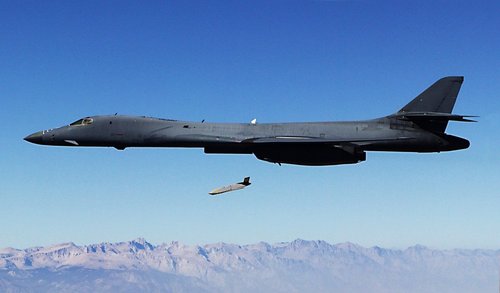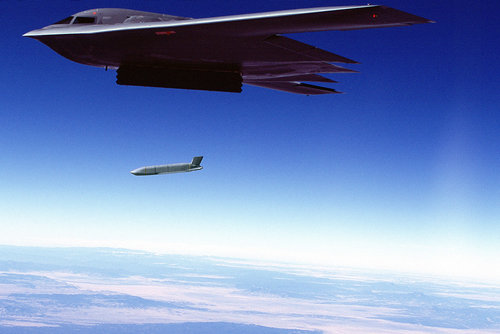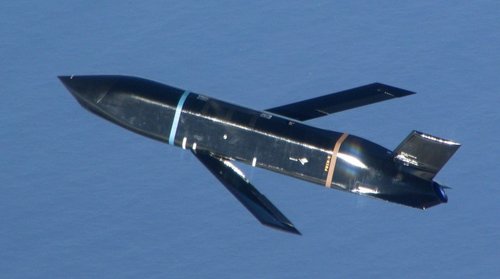KIRTLAND AIR FORCE BASE, N.M. -- The Air Force announced today plans to continue the Long-Range Standoff Weapon’s development with Raytheon Company as a sole-source contractor. The LRSO cruise missile is a critical element of the Air Force’s on-going nuclear recapitalization efforts.
The Air Force previously awarded two contracts for the LRSO Technology Maturation and Risk (TMRR) phase, one to Raytheon and one to Lockheed Martin, in August 2017.
After an extensive evaluation of contractor programmatic and technical approach during the TMRR’s preliminary design reviews, the Air Force decided to focus on Raytheon’s design.
“Our competitive TMRR phase, which included both Lockheed Martin and Raytheon as the prime contractors, enabled us to select a high-confidence design at this point in the acquisition process,” said Maj. Gen. Shaun Morris, Air Force Nuclear Weapons Center commander and program executive officer for strategic systems.
“And this early off-ramp of a contractor is completely in line with the existing LRSO acquisition strategy, which included periodic reviews to assess contractor designs. Lockheed Martin has been an excellent contractor and partner throughout the TMRR effort and this pivot to Raytheon does not represent a lack of effort or commitment on their part. Lockheed Martin has supported the nuclear enterprise for decades and we continue to value their expertise in sensors and nuclear certification and surety.”
“This is not a down-select per se; instead, we are reframing our relationship with Lockheed Martin to focus on specific technology maturation we believe either has future applicability for the final LRSO design or will reduce overall program risk,” said Elizabeth Thorn, AFNWC’s LRSO system program manager.
Communication is underway with the prime contractors and an orderly closeout process has commenced at the affected Lockheed Martin and supplier offices. In addition, interagency stakeholders have been notified.
The LRSO program office is now developing plans to pivot to a sole-source environment. It is also exploring opportunities to redirect funding to critical areas and potentially move some activities into the TMRR phase currently scheduled for the Engineering and Manufacturing Development phase, including flight tests.
Resource reallocation efforts are underway, in the prime contractor and sub-tier contractor offices, according to Thorn.
“I am confident in the program office’s ability to execute the next phase’s contract negotiations in a single-source environment and maintain schedule and affordability,” Morris said. “We are committed to acquiring an affordable LRSO weapon system and we have exceptional cost and design insight into both contractors’ strategies, due to our progress with the acquisition reviews and the cost-capability trades.”
Morris reiterated the off-ramping of a contractor in the TMRR phase is consistent with the LRSO acquisition strategy and different than Boeing’s decision last year not to bid on the EMD contract for the Ground Based Strategic Deterrent, another critical Air Force nuclear weapon modernization effort.
The LRSO program office, located at Eglin Air Force Base, Florida, is part of AFNWC’s Air Delivered Capabilities Directorate. Headquartered at Kirtland AFB, AFNWC is responsible for synchronizing all aspects of nuclear materiel management on behalf of Air Force Materiel Command, in direct support of Air Force Global Strike Command. The center has more than 1,300 personnel assigned to 18 locations worldwide.






